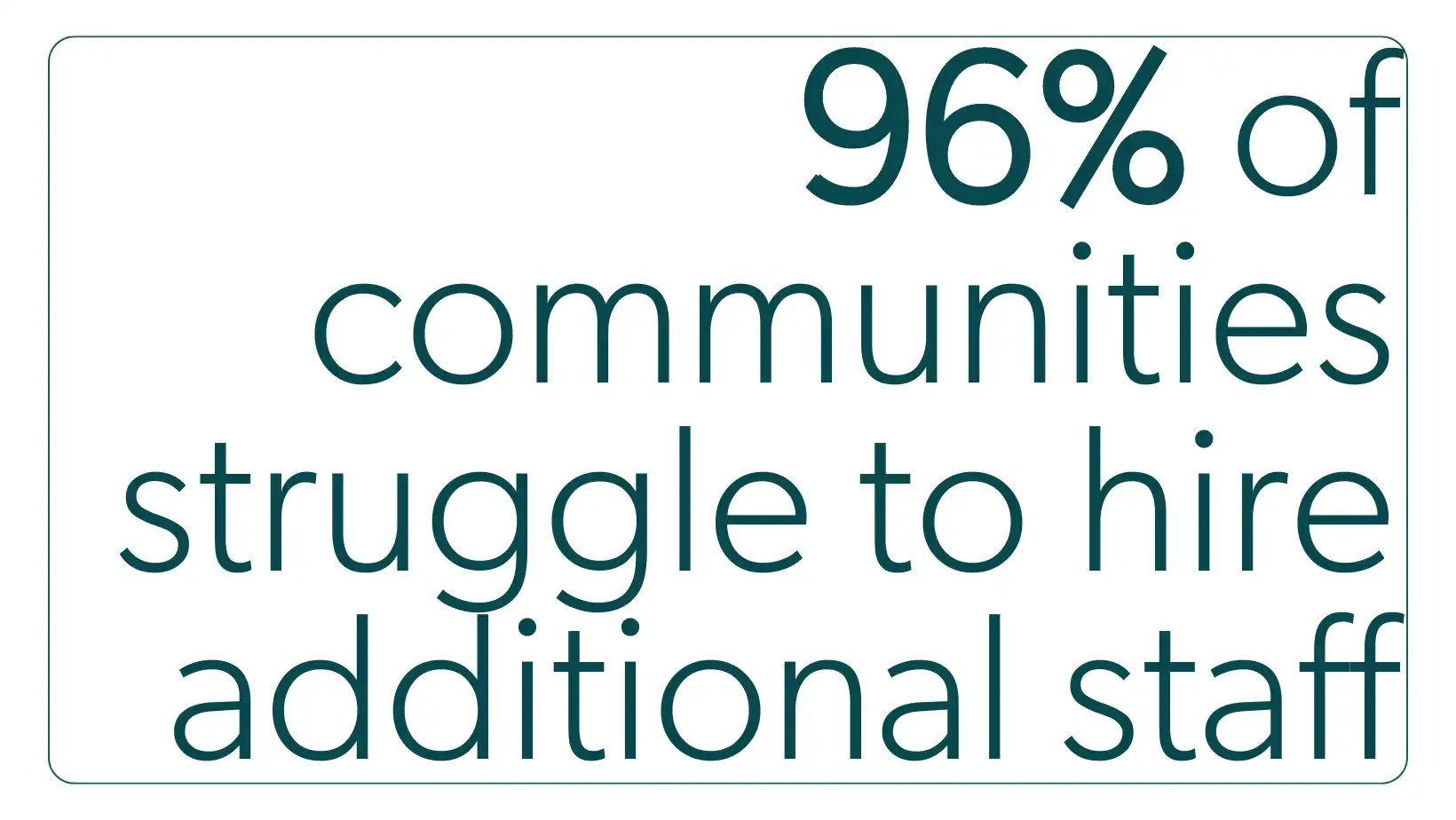Combat Staffing Shortages and Manage Stress in your Senior Care Community
As the world ages, providing compassionate and effective care for our seniors has become an ever more pressing concern. Senior care communities play a pivotal role in ensuring the well-being and comfort of our loved ones. However, the challenges of managing stress in this environment are not to be underestimated. A staggering 84% of senior care communities report staffing shortages. Striking the delicate balance between care quality and resident satisfaction while supporting tireless caregivers can be an intricate dance.
 Caregivers in senior care play a vital role in providing residents with physical, emotional, and social support. However, this profession can be emotionally and physically demanding. Challenges such as emotional strain, workload management, and a lack of resources can lead to stress, compassion fatigue, exhaustion, and burnout.
Caregivers in senior care play a vital role in providing residents with physical, emotional, and social support. However, this profession can be emotionally and physically demanding. Challenges such as emotional strain, workload management, and a lack of resources can lead to stress, compassion fatigue, exhaustion, and burnout.
Addressing stress and staffing shortages in senior care communities requires a comprehensive approach recognizing the interconnectedness of physical, emotional, social, and mental well-being. Some key elements of this approach include:
- Person-Centred Care: Tailoring care plans to individual needs and preferences, empowering seniors to make choices, and fostering a sense of control and dignity.
- Promoting Social Interaction: Encouraging social activities and facilitating opportunities for residents to connect to combat feelings of isolation.
- Support for Caregivers: Providing caregivers with training, resources, and support to cope with the emotional demands of their roles and prevent burnout.
- Mental Health Support: Offering access to mental health services and programs that address anxiety, depression, and other mental health concerns.
- Incorporating Technology: Integrating innovative technologies that improve communication and safety and streamline tasks, easing stress and enhancing caregivers' overall experience.

Exploring Various Ways, Technology Has Been Integrated into Senior Care Homes
In recent years, technology has revolutionized the landscape of senior care, enhancing the quality of life for residents, and streamlining processes for caregivers. The integration of various technological advancements has opened a myriad of possibilities, positively impacting the senior care environment. Some key ways technology has been embraced in senior care homes include:
- The emergence of wearable and remote monitoring devices has revolutionized the landscape of the senior care industry. From smartwatches to health trackers, these gadgets offer seniors the ability to monitor their physical health autonomously. Simultaneously, caregivers can effortlessly track the well-being of their charges. Seamlessly connected through the internet, these devices provide real-time data to caregivers, enabling them to make informed decisions and adjustments to care plans promptly. This technology not only minimizes health risks for seniors but also offers peace of mind to caregivers.
- VitalLink, an innovative senior care software solution, has become an indispensable tool for monitoring the vital signs of residents. This cutting-edge technology empowers caregivers in senior care communities to track essential physiological markers such as blood pressure, heart rate, and respiration rates with precision and ease. By leveraging VitalLink, senior care communities can streamline workflows and elevate the day-to-day stress faced by caregivers.

Using Technology to Streamline Administrative Tasks and Reduce Caregiver Burnout
Caregivers in senior care communities' shoulder numerous administrative responsibilities in addition to providing direct care to residents, 96% of communities report that they struggle to hire additional staff to lessen the workload. In the quest to manage stress effectively, senior care technology emerges as a powerful ally in communities. Technology offers innovative solutions to streamline administrative tasks and alleviate the burden on caregivers, reducing burnout. Technology has shown great promise in reducing stress and enhancing well-being, from senior care software solutions that enhance safety and independence to virtual reality experiences that spark joy and connection.
Through telehealth services, remote monitoring, and virtual socialization platforms, technology enables seniors to access healthcare and maintain meaningful connections with loved ones, thereby alleviating feelings of isolation and loneliness. By embracing technology to streamline administrative tasks, caregivers can dedicate more time and attention to meaningful interactions with residents, fostering stronger connections and improving senior healthcare outcomes. Additionally, reducing the administrative workload can significantly contribute to decreasing caregiver burnout and turnover rates, leading to a more sustainable and compassionate senior care environment.
In conclusion, managing stress in senior care homes is an ongoing mission that requires dedication, empathy, and innovation. By recognizing the significance of emotional well-being for both residents and caregivers, we lay the foundation for a more compassionate and supportive care environment. When embraced responsibly and thoughtfully, technology can serve as a valuable tool to alleviate stress, reduce burnout and turnover rates. Implementing technologies to ease caregivers' burdens can help foster a senior care experience that embraces the best of technology while nurturing the human touch that is at the core of caring for senior residents.